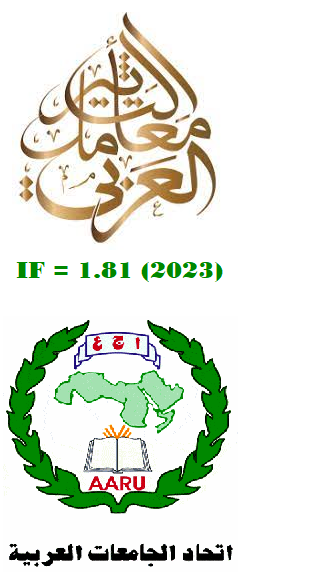Perception and Opinion of Customers towards Automated Teller Machine Services with Special Reference to Kurdistan Region
Abstract
Modern technology has changed human life by making it faster and easier. Technology innovation emerged as source of competitive strength and can achieve success through new innovation. ATM plays vital role in banking industry by providing all necessary banking facilities in easy and handy way to their customers at their doorstep. As Kurdistan is growing economy, therefore to assess perception and expectation of ATM customers, 315 respondents from different places of Kurdistan region were taken into consideration. This study is based on personal approach and observation. Structured questionnaire administered after taking opinion and modification by banking personal, customer discussion and review of literatures. For the convenience of respondents Likert measurement scales was used. To identify most service quality dimensions in connection with overall customer satisfaction; reliability test, descriptive analysis, correlation and coefficient and regression analysis test and ANOVA tests are done through SPSS 25.0. At the end it is concluded that most of factors are positively, significantly correlated with overall customer satisfaction. Based on personal discussion with customers and bank officials’ and literature reviews, recommendations are mentioned at the end.
Downloads
References
ATM Safety and Security Recommendations. (2019). Retrieved from: https://www.uca.edu/police/crime-prevention/atm-safety-and-security-recommendations. [Last accessed on 2019 Oct 16].
Cardless ATM Service. (2019). Retrieved from: https://www.finextra.com/blogposting/14692/cardless-atms-best-practices-to-support-cardless-atminnovation. [Last accessed on 2019 Aug 27].
Demographic Survey, Kurdistan Region of Iraq. (2018). Retrieved from: https://www.iraq.unfpa.org/en/publications/demographic-survey-kurdistan-region-iraq. [Last accessed on 2019 Apr 18].
Details of ATM. (2019). Retrieved from: https://www.cihanbank.com.iq/en/cihan-bank-atms-is-everywhere. [Last accessed on 2019 Jan 10].
Dilijonas, D., Kriksciuniene, D., Sakalauskas, V., & Simutis, R. (2009).Sustainability Based Service Quality Approach for Automated Teller Machine Network. Retrieved from: http://www.vgtu.lt/leidniai/leidykla/korsd_2009/
pdf/241-246-p100-dilijonas-47.pdf.
Genevois, M.E., Celik, D., & Ulukan, H. Z. (2015). ATM location problem and cash management in automated machines. International Journal of Industrial and Manufacturing Engineering, 9(7), 2543-2548.
Hendrickson, A. R., Massey, P. D., & Cronan, T. P. (1993). On the test-retest reliability of perceived usefulness and perceived ease of use scales. MIS Quarterly, 17(2), 227-229.
Introduction of ATM. (2019). Retrieved from: http://www.kibid.com/english/atm. [Last accessed on 2019 Jan 15].
Issahaku, H. (2013). Customers’ experiences with ATM: A comparative analysis of GCB and Barclays bank ATM services. Advances in Agriculture, Sciences and Engineering Research, 3(3), 724-734. Retrieved from: http://www.ejournal.sedinst.com. [Last accessed on 2019 Feb 12]
Ivica, Ž., Marko, H., & Dino, P. (2015). Cost-benefit analysis of the ATM automatic deposit service. Croation Operational Research Review, 6(1), 255-268.
Kaur, G., & Gupta, S. (2013). Predicting customers’ behavioral intentions toward ATM services. Journal of Indian Business Research, 5(4), 251-270.
Komal, M., & Sultan, S. (2009). Impact of ATM on customer satisfaction (a comparative study of SBI, ICICI and HDFC bank). Business Intelligence Journal, 2(2), 276-287.
Kumbhar, V. M. (2011). Comparative study of customers’ satisfaction in ATM service of public and private banks in Kolhapur. The Journal of Sri Krishna Research and Educational Consortium, 2(3), 144-156.
Kumbhar, V. M. (2012). Determinants of customers’ satisfaction in ATM service setting: Empirical evidences from India. Pranjan, 40(2), 2011-2012.
Lewis, B. R., Orledge, J., & Mitchell, V. (1994). Service quality: Students’ assessment of banks and building societies. International Journal of Bank Marketing, 12(4), 3-12.
Malhotra, N. K., and Dash, S. (2007). Market Research-An Applied Orientation. 5th ed. (pp. 610-635). New Delhi, India: Pearson Education.
Mcandrews, J. J. (2003). Automated teller machine network pricing a review of the literature. Review of Network Economics, 2(2), 146-158.
Mobarek, A. (2007). E-Banking Practices and Customer Satisfaction - A Case Study in Botswana. 20th Australasian Finance and Banking Conference.
Oludare, E. A., Aman, J., Oludare, I. A., Humera, A., & Nachaat, A. M. (2019). Fingereye: Improvising security and optiizing ATM transaction time based on iris-scan authentication. International Journal of Electrical and Computer Engineering, 9(3), 1879-1886.
Osaremwinda, O. D. (2018). ATM service optimization of banks: Queuing modeling approach. Journal of economics and Finance, 2(1), 37-41.
Priyanka. M. (2017). Secured ATM transaction using stegano PIN. International Journal of Research in Applied Sciences and Engineering Technology, 11(8), 2330-2335.
Rameshkumar, N., & Shanmugananda, V. J. (2016). A study on customer awareness and satisfaction level towards ATM services provided by ICICI bank (with special reference to Coimbatore city). International Journal of Commerce, Business and Management, 5(3), 9-15.
Reform and Investment Finance. Retrieved from: https://www.investingroup.org/review/237/reform-investment-finance-kurdistan. [Last accessed on 2019 Feb 18].
Sadekin, M. S., & Shaikh, A. H. (2017). Customers’ assessment on ATM services in Bangladesh. International Journal of Finance and Banking Research, 3(3), 39-43. Retrieved from: http://www.sciencepublishinggroup.com/j/ijfbr. [Last accessed on 2019 Feb 23].
Sathye, M. (1999). Adoption of internet banking by Australian consumers: An empirical investigation. International Journal of Bank Marketing, 17(7), 324-334.
Shakhawat, H., Aminul H. R., & Lakkhan, C. R. (2015). Analysis of factors affecting the customer’s satisfaction with reference to ATM services in Dhaka city. IOSR Journal of Business and Management, 17(11), 68-75.
Sivakumar, M., Rengarajan, V., Anand, V. V., Srinivasan, S., Kalayanasundaram, M., & Saravanakumar, G.R. (2017). A study on services quality in ATM services in public sector banks in Kanchipuram town. International Journal of Economic Research, 14(3), 401-412. Retrieved from: http//www.serialsjournal.com. [Last accessed on 2019 Feb 23].
Srivatsa, K., Yashwanth, M., & Parvathy, A. (2010). RFID and mobile fusion for authenticated ATM transaction. International Journal of Computer Applications, 3(5), 5-10.
Surjadjaja, H., Ghosh, S., & Antony, J. (2003). Determining and assessing the determinants of e-service operations. Journal of Service Theory and Practice, 13(1), 39-53.
Taha, A. (2018). Securing ATM transactions using raspberry PI process. International Journal for Research in Applied Science and Engineering Technology, 6(7), 310-314.
Vivek, K. S., & Agarwal, R. P. (2011). Formal verification of finger print ATM transaction through real time constraint notation (RTCN). International Journal of Computer Science Issues, 8(3), 395-400.
Vladislav, G. (2015). ATM Service Cost Optimization Using Predictive Encasement Strategy. Conference Paper.
Weerasiri, R. A. S., & Koththagoda, K. C. (2017). The impact of automated teller machines (ATMs) service on customer satisfaction: A study based on state banks in Sri Lanka. South Asian Academic Research Journals: Journal on Banking and Insurance Research, 6(2), 95.
Worako, A. W. (2018). Impact of ATM services on the customers saving withdrawal rate in the commercial bank of Ethiopia. Journal of Accounting and Marketing, 7(3), 1-4.
World Bank Group. (2016). The Kurdistan Region of Iraq. Reforming the Economy for Shared Prosperity and Protecting the Vulnerable. Washington, DC: World Bank Group. Retrieved from: http://www.mop.gov.krd/resources/mop%20 files/pdf%20files/en reforming%20the%20krg%20reforming%20the%20 economy%20for%20shared%20prosperit.pdf. [Last accessed on 2019 Feb 24].
Yeliz, E., Nicoleta, S., & Ekrem, D. (2019). Optimal ATM replenishment policies under demand uncertainty. Operation Research, 1-31.
Copyright (c) 2020 Omead I. Hussain, KRUSHNA V. PADOLE

This work is licensed under a Creative Commons Attribution-NonCommercial-NoDerivatives 4.0 International License.
Authors who publish with this journal agree to the following terms:
1. Authors retain copyright and grant the journal right of first publication with the work simultaneously licensed under a Creative Commons Attribution License [CC BY-NC-ND 4.0] that allows others to share the work with an acknowledgment of the work's authorship and initial publication in this journal.
2. Authors are able to enter into separate, additional contractual arrangements for the non-exclusive distribution of the journal's published version of the work (e.g., post it to an institutional repository or publish it in a book), with an acknowledgment of its initial publication in this journal.
3. Authors are permitted and encouraged to post their work online (e.g., in institutional repositories or on their website) prior to and during the submission process, as it can lead to productive exchanges, as well as earlier and greater citation of published work (See The Effect of Open Access).









